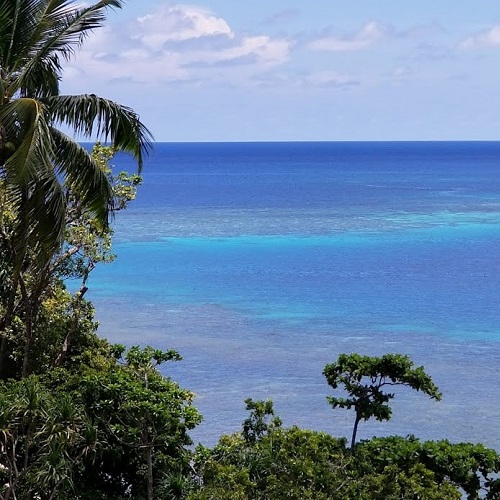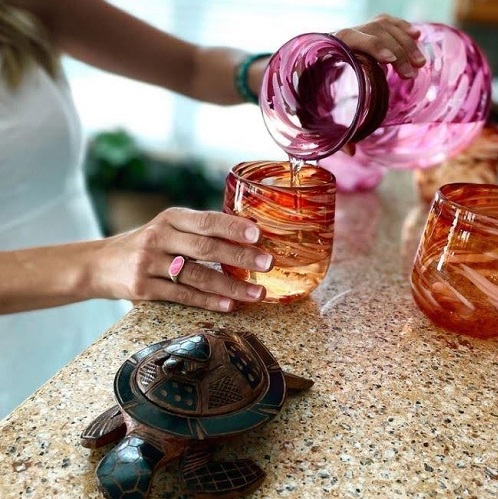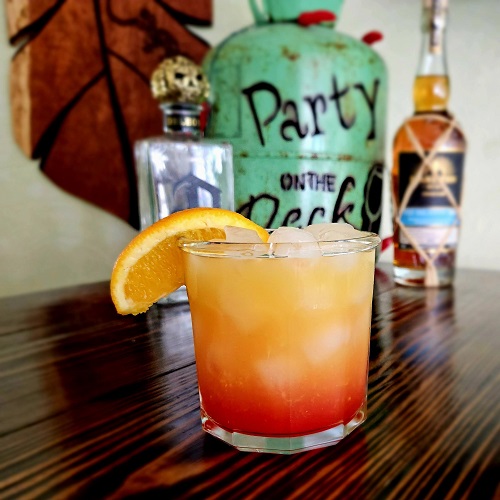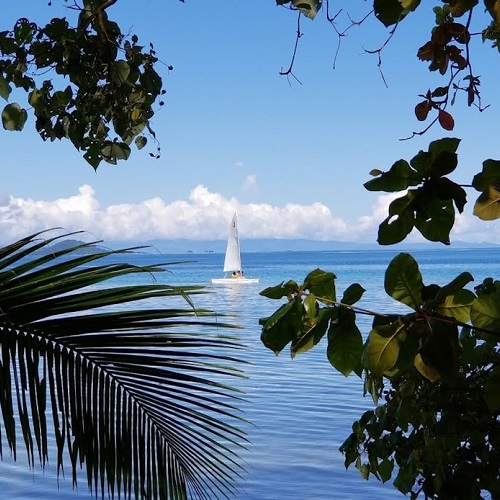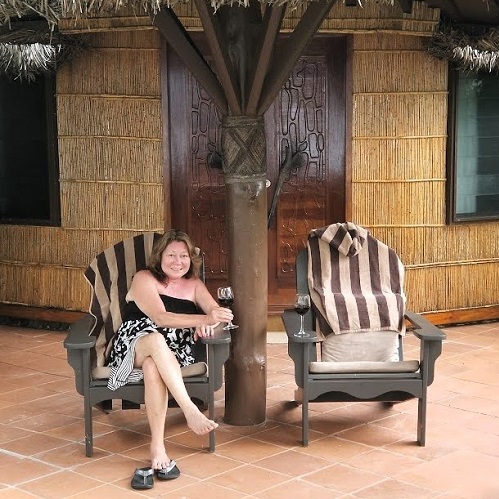
10 Tropical Bedroom Design Ideas & Practical Advice

Tiki Décor Guide: How to Create an Awesome Tiki Space
Tiki: A Uniquely Exotic And Vibrant Part of Americana
The History of Tiki: A Cultural Journey Through Time
Tiki culture has become synonymous with vibrant
For many, Tiki is an awesome way to decorate and to entertain. For others, it is an exaggerated design style that is a dated and silly concept which is full of kitsch. Others see it as an example of cultural appropriation. But regardless of one’s preferences and views, the story of Tiki is a fascinating one because at its core, it contains so many unique elements of history, art, and culture.
This post will explore the origins of Tiki, its evolution through history, and its lasting impact on modern American society. Then, in our next post, we will examine what it looks like and how to use it into your home or bar to create an authentic Tiki experience.

Photo Credit: La Luz de Jesus Gallery
What is Tiki?
The word “Tiki” comes from the Maori language of New Zealand and it refers to the first mortal In Māori mythology. Tiki is the first man created by Maori gods and his carved image is the representation of the first human. These carved images are ornamental pendants usually made from greenstone or “pounamu” which is worn around the neck.
The phrase “hei-Tiki” wishes wisdom, safe passage and fertility upon those who wear it as the word “hei” means “to be fortunate and happy”. Tikis are considered to be “taonga” or treasure by the Māori as they are passed down to descendants, their meaning and value is deeply connected to ancestral guidance.

Photo Credit: Walker & Hall New Zealand
While the earliest carvings were made to wear around the neck, over time, carved statues in all sizes were being made from wood, pounamu, and other stone, in various humanoid forms called “Tikis”. They became known as symbols of creation and fertility as many throughout Polynesia believed that they embodied the spirits of their ancestors. Large wooden carvings became symbols of spirituality and were used in different religious ceremonies. Today we can see that Tiki statues and carvings represent many deities and ancestral figures and that they have long been a part of the traditional art forms of Polynesian cultures such as in Tahiti, New Zealand, and Hawaii.

Photo Credit: MavinWorks LLC
The Birth of Tiki Culture: 1930s
During the 18th and 19th centuries, European exploration was taking place throughout the South Pacific. Explorers, traders, and missionaries documented their encounters with the local people and what they experienced as they traveled throughout the islands. These experiences gave birth to the Western fascination with the exotic allure of Polynesia.

Photo Credit: Wikipedia
Then in the 1930s, a turning point occurred as artifacts from Polynesia and artwork about Polynesia began to appear in North America. But the imagery of Polynesian culture that came to life for Americans did not depict real life in the islands. What Americans actually saw was a romanticized blend of different elements from various Polynesian cultures which were commercialized for appeal in the US. This is what would become known as “Tiki” for Americans.

Photo Credit: The Tiki Store of Hawaii

Photo Credit: Jim Heimann Collection/Getty Images
It was because of this appeal that the word “Tiki” started to become more of an adjective as it began to be used to describe a particular look and entertainment style that was inspired by the myths, the artwork, and the aesthetics of Polynesia. The use of this word continued to grow until it eventually described a new American subculture which became a mid-20th-century American phenomenon. Since then, Tiki has evolved from this mid-century American fascination into a cultural phenomenon which continues to this day as it influences interior design, fashion, entertaining, food, and music.
The Golden Age of Tiki: 1940s – 1960s
As America was being introduced to “Tiki” in the 1930s, the Americanized version of it which today is considered to be vintage or “original Tiki” began to take off when Ernest Raymond Beaumont Gantt (aka “Donn Beach”) opened his first bar in Los Angeles in the 1933. He had traveled extensively through the South Pacific and fell in love with it. He brought his fascination for the region’s cultures back with him and it inspired him to open “Don the Beachcomber” which was a


Photo Credits: MyTiki.life – Don The Beachcomber, Huntington Beach, CA
His bar became incredibly popular, especially after World War II. As soldiers returned from the Pacific theater with their stories of what they saw and with souvenirs from these
Don the Beachcomber was a huge success. Following that success in 1934 was Victor Bergeron (who is later credited with creating the first Mai Tai) as he opened “Trader Vic’s” in Oakland, California. It quickly became another iconic Tiki restaurant and bar. Bergeron used Polynesian motifs to decorate his restaurant which further contributed to the look of Tiki as we know it. He created a unique experience for patrons that included enjoying elaborate cocktails with

Photo Credit: Pitteats.blogspot.com
Tiki culture reached its peak during the post-World War II era when escapism was at its strongest. As returning servicemen continued to bring back stories from the Pacific, the American public’s fascination with Polynesian culture only continued to grow. However, by this time, Tiki culture was no longer just about escapism. It had become a reprieve of sorts, from the anxieties of modern-day life.
For many, Tiki had become something which offered a simple vision of paradise, a place where the stresses of daily life could be forgotten. The emphasis on leisure, relaxation, and fun times resonated with the American dream. This made Tiki bars very popular as gathering places.
By the 1950s and 1960s, Tiki had fully infiltrated American pop culture. Hawaii became the 50th state in 1959 and this event made Tiki bars were booming and now, Tiki-style architecture began to appear in both residential and commercial buildings. Tiki-style art and home décor were extremely popular.
The fashion industry was creating Tiki-inspired clothing. Themed restaurants were expanding across the country as Trader Vic’s opened new locations and new chains like Kon Tiki opened. These restaurants featured lush

Photo Credit: Liquor.com
Movies during this time such as “South Pacific” were a hit as were songs like “Blue Hawaii”. These only help to further paint a romanticized picture of island life. Entertaining in Tiki style was not limited to bars and restaurants. People were embracing it at home with backyard Tiki parties complete with Polynesian-inspired cuisine,

Photo Credit: Heywood-Wakefield
The Decline of Tiki: 1970s – 1980s
By 1970, the decline of the Tiki culture began to appear. As air travel grew and became more widely available, more and more Americans began traveling to
Social preferences and attitudes also began to change. As people came to realize that Tiki represented a romanticized and somewhat inaccurate interpretation of Polynesian culture, this lead many to accuse these establishments of cultural appropriation.

Photo Credit: Deviantart.com
In addition to this, the 1970’s also brought new trends in dining and entertainment. Many Tiki bars and restaurants had to completely transform themselves and adapt to the changing tastes in order to survive. Unfortunately by the 1980’s, many had already closed their doors.

Photo Credit: The New York Times
The Resurgence of Tiki: 1990s – 2000s
By the mid-1990s and into the early 2000s, a renewed appreciation for mid-century design gained popularity. With the advent of the internet and so much information being available at one’s fingertips, a new generation’s fascination with retro looks and aesthetics appeared. This included a renewed interest in Tiki as a vintage design style. This has since created a nostalgia for the golden age of Tiki which had become a symbol of a bygone era.

Photo Credit: Atomic Ranch
People also began to seek out creative and unique ways to have social experiences and Tiki-inspired places provided a vibrant and fun way to do that. New Tiki bars and restaurants have opened in various cities and towns across the country with many of those now focusing on more authentic Polynesian cultural designs rather than relying solely re-creating the look of the 1950s and 1960s. Tiki fans also started to create their own outdoor Tiki bars and spaces at home again.

Photo Credit: Livin’ Loose Tiki Lounge – Boomer Blake
Modern-Day Tiki: 2010’s – Present
Today, Tiki culture remains a beloved niche and has experienced a significant renaissance with enthusiasts worldwide celebrating its unique blend of history, craftsmanship, design styles, and escapism. Social media platforms and online forums have allowed Tiki lovers to connect, exchange ideas, share design tips and recipes, and to foster a sense of camaraderie. Facebook is one place where several groups have formed where members share ideas and discuss methods and techniques for designing and building their own Tiki bars and spaces. We love “Theming Tiki Bars” and have learned so much from this group!

Photo Credit: Theming Tiki Bars Facebook Group
Various bloggers are out there too with their own pages where they discuss creating Tiki spaces and share their own experiences. The “Fugu Lounge” on Facebook is a great page for ideas and tips because the owner shares a number of posts and videos about how to create things yourself.

Photo Credit: Fugu Lounge
Now that so much information is available online, modern Tiki enthusiasts have also been able to learn so much more about where Tiki comes from and why it is the way it is. They are much more attuned to cultural identities and realities. They are more interested in honoring and respecting Polynesian and Pacific cultures and communities. They are educating themselves about those histories and traditions that inspire the elements of Tiki. More people are now embracing the authenticity of a culture’s identity and aesthetics because they understand the difference between cultural appreciation versus appropriation.
Today’s bar and cocktail scene is also helping to breathe new life into Tiki culture. Mixologists are experimenting with fresh ingredients, artisanal spirits, and innovative techniques which are elevating classic Tiki cocktails and other tropical drinks to new levels. Since cooking and cocktail shows and competitions have become so popular on a number of food channels. Tiki cuisine is also gaining in popularity again too. Many bars and restaurants are once again offering dishes inspired by Polynesian flavors. This fusion of food and drinks creates a wonderful (and nostalgic!) immersive experience that pays homage to the history and aesthetics of Tiki while embracing modern culinary trends.

Photo Credit: Pinterest

The influence of Tiki today extends far beyond bars and restaurants. Tiki imagery is once again popular in art and in home décor as it can easily be incorporated into contemporary upscale
Tiki lovers are also creating their own Tiki styles by mixing elements of the original mid-century look with the more surfer and beachy look associated with Jimmy Buffet and his Parrotheads as well as with elements that are inspired by the Caribbean and the pirate themes and imagery of its past. (We will have a separate post about Tiki styles!) Home Tiki bars, both indoors and outdoors, are coming back because people still enjoy a level of escapism. Not only that, they are simply fun and that nostalgic look is just awesome!
Tiki enthusiasts can even participate in events like Tiki Oasis and The Hukilau. These events bring people who love Tiki from around the world to celebrate Tiki through music, art, and of course, cocktails. Attendees can learn all about the history and the wonderful and vibrant
Final Thoughts About Tiki Culture
The history of Tiki is an interesting mix of Polynesian cultures, historical events, and artistic interpretations. It is a complex story of human events, cultural aesthetics, and societal needs. Tiki culture has evolved over the years but to this day, it remains a fun and vibrant part of contemporary life. Tiki offers a unique lens through which we can explore the themes of escapism, creativity, and community while not losing sight of the continual need to understand and promote the authenticity of island cultures.
Whether we are sipping a meticulously crafted cocktail, engaging with the artistry of Tiki decor, or participating in communal cultural celebrations, the spirit of Tiki continues to live on. It is essential that we honor its roots while embracing current trends and cultural exchanges that continue to shape this beloved American phenomenon. Tiki culture is not just a fleeting trend, it is a unique piece of Americana, a celebration of the human desire for connection, adventure, and a taste of paradise.








